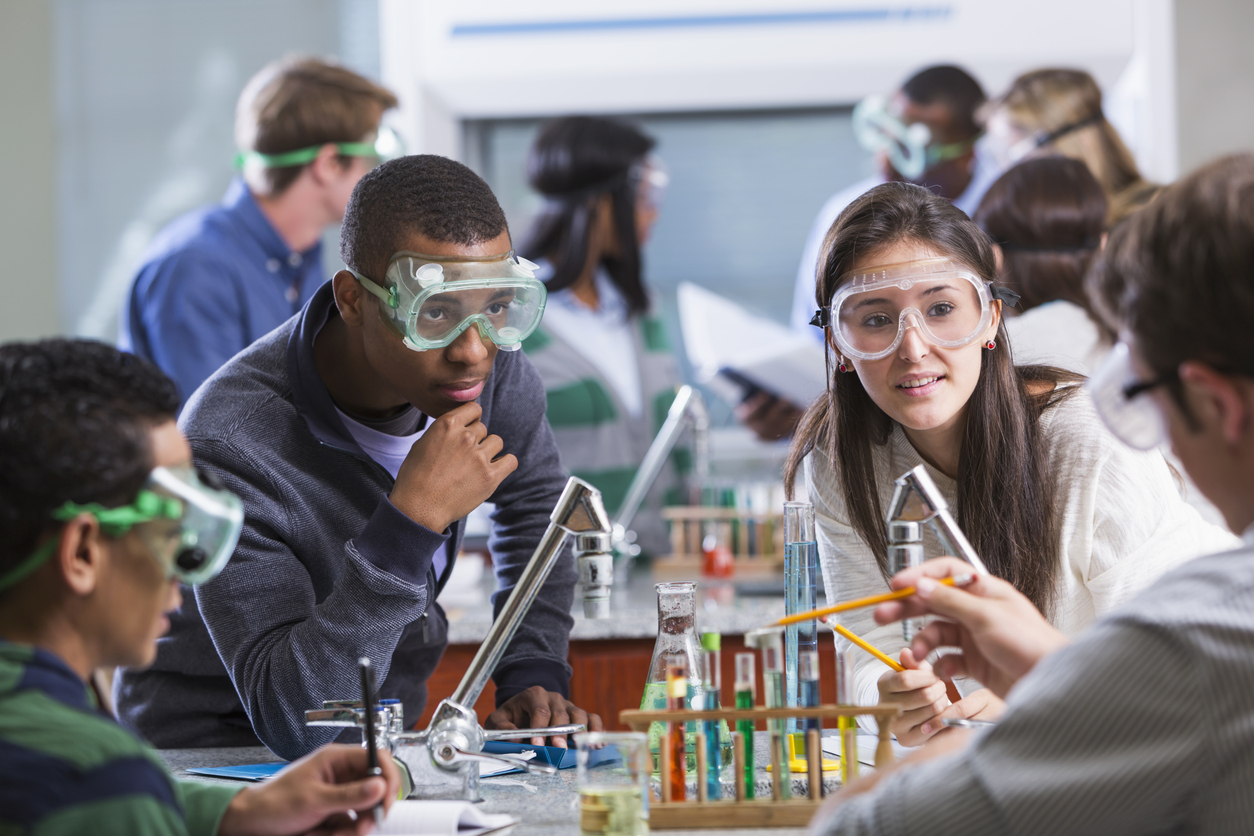Tehmina Khan shares her vision of how learning STEM (Science, Technology, Engineering, and Math) better prepares students for global citizenship and career readiness.


As per President Barack Obama, “[Science] is more than a school subject, or the periodic table, or the properties of waves. It is an approach to the world, a critical way to understand and explore and engage with the world, and then have the capacity to change that world.” Technological advancements are contributing to expanding education and learning in the 21st century. At the beginning of the 21st century, The Next Generation Science Standards (NGSS) were written, due to a report titled “The Opportunity Equation: Transforming Mathematics and Science Education for the Global Economy (2009),” which was published by the Carnegie Corporation. This report explained how science and math education were the main drivers for our economy and, that our education system needed to focus on preparing our students for a future in science, technology, engineering, and mathematics (STEM) fields as discoverers and innovators. The National Research Council published “Successful K-12 STEM Education (2011),” which states:
…the primary driver of the future economy and concomitant creation of jobs will be innovation, largely derived from advances in science and engineering… 4 percent of the nation’s workforce is composed of scientists and engineers; this group disproportionately creates jobs for the other 96 percent.
This report called for innovative STEM instruction in schools to improve our economy, our humanity and our standards of living, and, with this report, began the development of the Next Generation of Science Standards (NGSS). Developing these standards was done through collaborative work of science educators and professionals in the STEM workforce. The “Successful K-12 STEM Education (2011),” report helped develop a model of “real-world” science standards that can be implemented in schools to help students learn and engage in science so that they are prepared to contribute to the STEM workforce.
With STEM occupations growing more rapidly than non-STEM occupations, our students have greater opportunities in STEM careers. The goal for STEM educators is to provide our students with the knowledge and skills they need to be successful in the 21st Century. This STEM education will support their learning through solving problems and evaluating evidence to make decisions. Therefore, STEM educators are preparing our students for their future, while STEM education creates innovators and problem solvers.
Since science is everywhere in the world around us, STEM education is so important and meaningful to students. With technology continuously expanding, it is in every aspect of their lives. Mathematics is used in every occupation as well as in our daily lives, and engineering design is all around us in buildings, roads, and bridges. STEM education helps us understand the world around us better, in areas such as weather, climate, and natural disasters. By exposing students to real world experiences, they are informed and prepared about a future in STEM. Real-life connection to STEM will give students an early, strong, science education that helps them make connections and know the possibilities of careers in STEM.
The importance of developing 21st century skills in all our students helps prepare them for their future. 21st century skills are developed through critical thinking, analysis, self-reflection, and awareness of belief systems of multicultural groups and examining real-world situations. The universe is viewed as evolving and STEM teaching methods focus on hands-on problem-solving of current issues. Students are encouraged to apply their knowledge to real situations through experimental inquiry and diverse perspectives. This will prepare students for a future in STEM careers.
In conclusion, the long-term benefits of STEM education provide a huge investment in our future. Implementing STEM education in our schools today, gives the current generation of students opportunities to be successful as adults. Careers in STEM offer higher earnings and provide for higher standards of living, and, an enhanced quality of life. More females in STEM careers will be a turning point for future generations. These generations will be more likely to grow up in families that can offer them enriching opportunities and lifestyles. Therefore, society in general will benefit if more students are heading towards a future in STEM careers.
References
National Research Council 2011. Successful K-12 STEM Education: Identifying Effective Approaches in Science, Technology, Engineering, and Mathematics. Washington, DC: The National Academies Press.
The Opportunity Equation: Transforming Mathematics and Science Education for Citizenship and the Global Economy. Retrieved from https://media.carnegie.org/filer_public/80/c8/80c8a7bc-c7ab-4f49-847d-1e2966f4dd97/ccny_rep ort_2009_opportunityequation.pdf
—
Tehmina Khan is a high school science department chair with 12 years of experience in education. She has a Bachelors of Science degree in Biology from The City University of New York, a Masters in Science degree in Health Sciences and Secondary Science Education and a sixth-year certificate in Educational Leadership from Quinnipiac University. She is currently a doctoral student at the University of Bridgeport, studying International Educational Leadership. In her current school district, Tehmina has written the science curricula for the Human Biology, Environmental Biology and Chemistry NGSS-aligned courses and facilitated several workshops in improving instructional practices during faculty and department meetings.
Tehmina was a Teacher of the Year finalist at her current district, prior to becoming an administrator. She is currently a second year fellow of The National Network of State Teachers of the Year (NNSTOY) VOYA STEM Fellowship, which includes 15 members of NNSTOY and 15 high-potential educators that collaboratively explore what leads to effective STEM learning to support STEM educators and provide students with robust learning environments to increase their interest in STEM careers. Tehmina’s dissertation research focuses on teacher leadership models and programs that build capacity in schools.